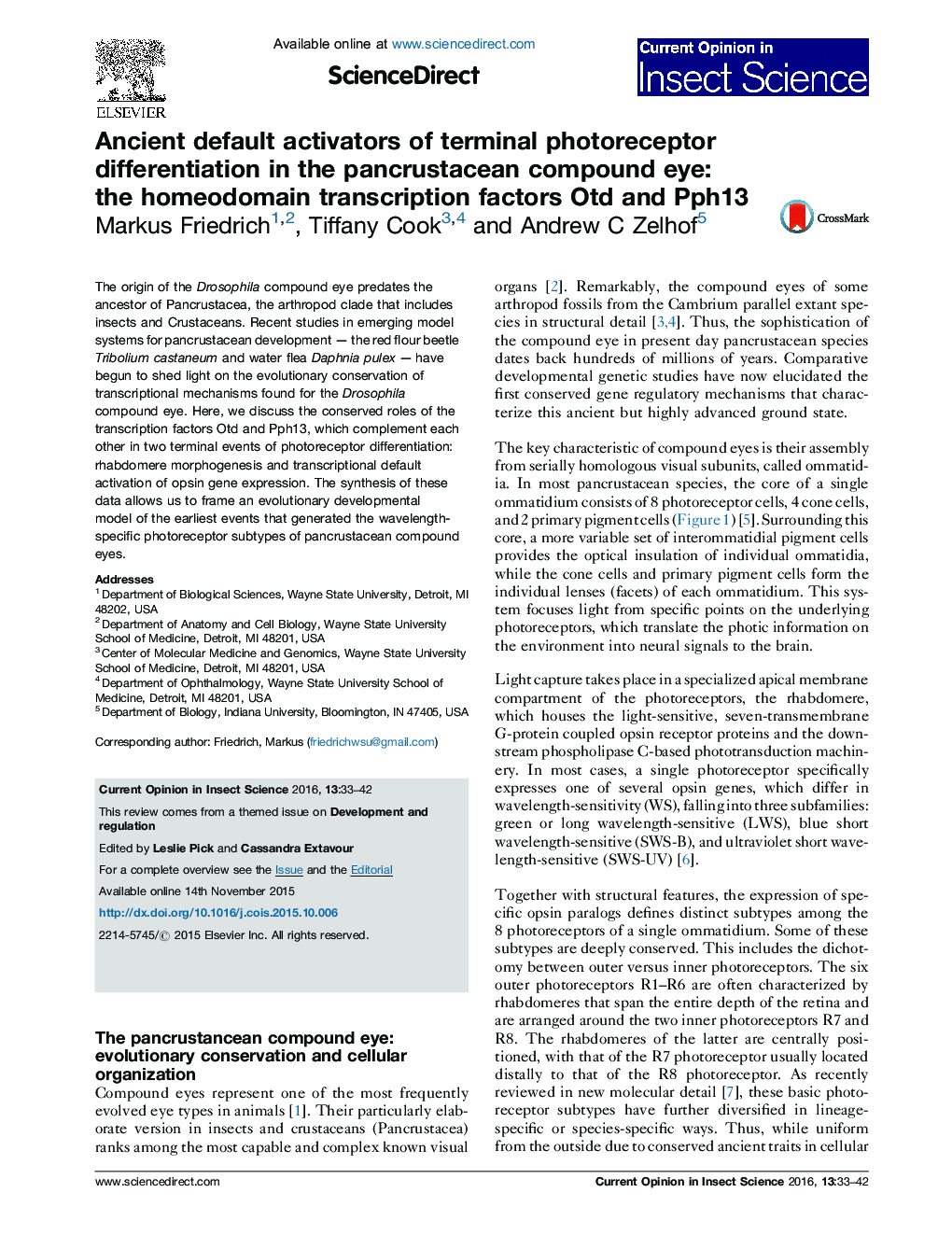| Article ID | Journal | Published Year | Pages | File Type |
|---|---|---|---|---|
| 4508200 | Current Opinion in Insect Science | 2016 | 10 Pages |
•Otd and Pph13 are conserved in pancrustacean photoreceptor differentiation.•Otd is an ancestral default activator of short wavelength opsin transcription.•Pph13 is an ancestral default activator of long wavelength opsin transcription.•Pph13 and Otd share broader roles in activation of photoreceptor proteins.•First developmental model of pancrustacean photoreceptor diversification.
The origin of the Drosophila compound eye predates the ancestor of Pancrustacea, the arthropod clade that includes insects and Crustaceans. Recent studies in emerging model systems for pancrustacean development — the red flour beetle Tribolium castaneum and water flea Daphnia pulex — have begun to shed light on the evolutionary conservation of transcriptional mechanisms found for the Drosophila compound eye. Here, we discuss the conserved roles of the transcription factors Otd and Pph13, which complement each other in two terminal events of photoreceptor differentiation: rhabdomere morphogenesis and transcriptional default activation of opsin gene expression. The synthesis of these data allows us to frame an evolutionary developmental model of the earliest events that generated the wavelength-specific photoreceptor subtypes of pancrustacean compound eyes.
